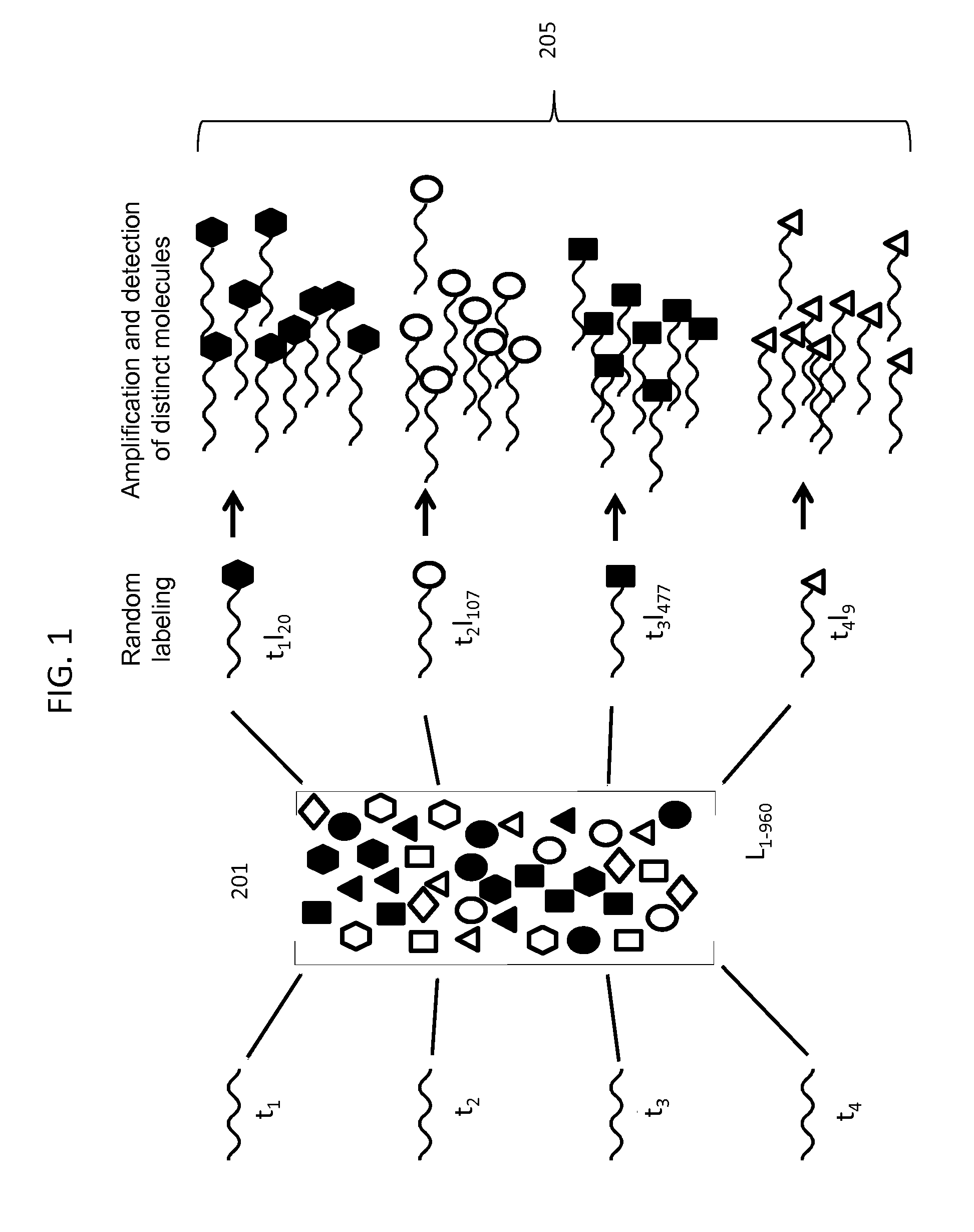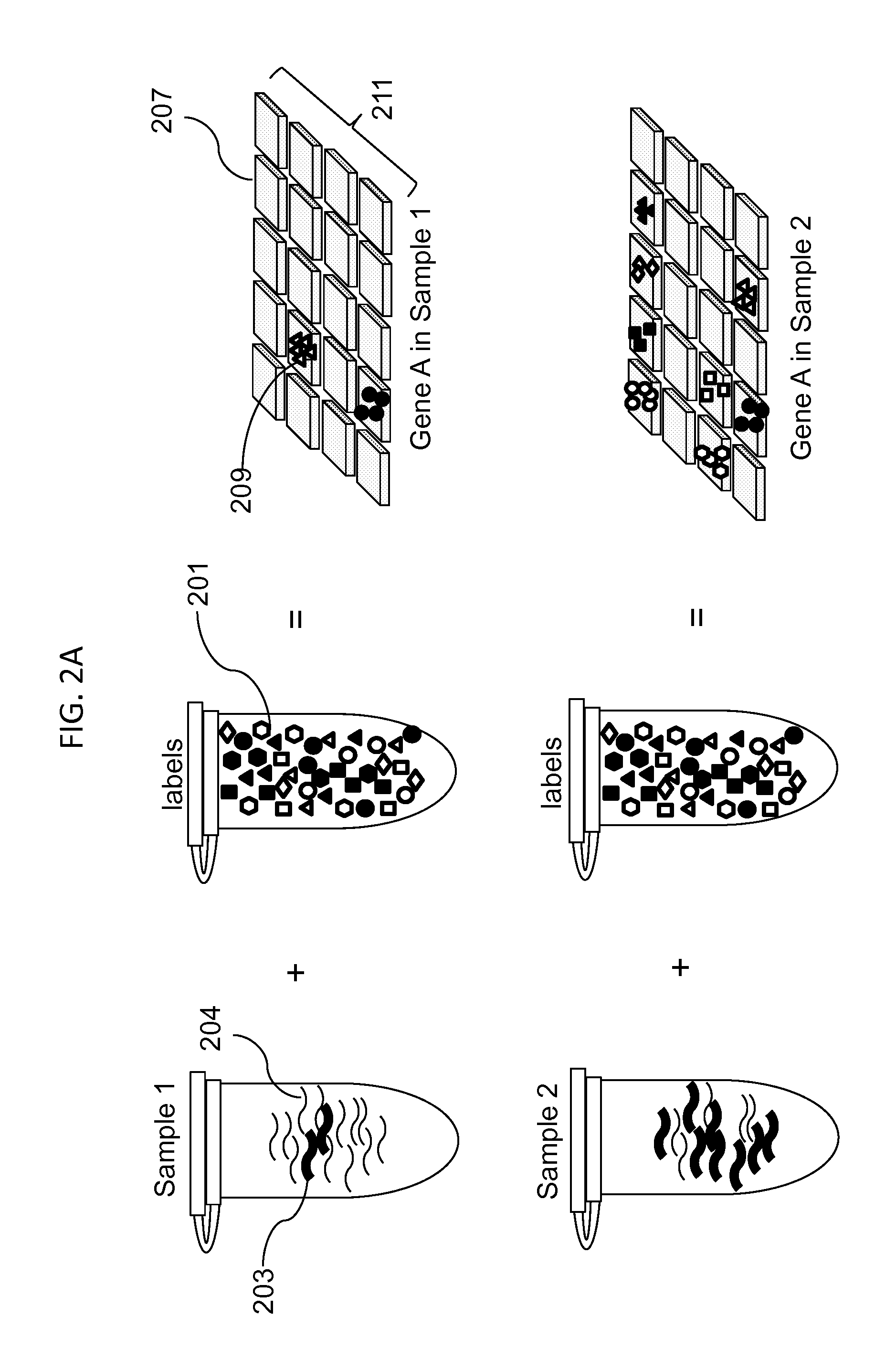Digital Counting of Individual Molecules by Stochastic Attachment of Diverse Label-Tags
- Summary
- Abstract
- Description
- Claims
- Application Information
AI Technical Summary
Benefits of technology
Problems solved by technology
Method used
Image
Examples
example 1
[0248 of a method for selecting a collection of label-tags starting with all possible 14 mers (414 or ˜268 million possible label-tags). Step 1: clustering based on the last 7 bases: all sequences with the same last 7 bases are grouped together; within each cluster, randomly pick one sequence, this gives us 11,025 sequences, denoted by set A. Step 2: clustering based on the first 7 bases: all sequences with the same first 7 bases are grouped together; within each cluster, randomly pick one sequence, this gives us 13,377 sequences, denoted by set B. Step 3: get the union set of set A and B, the combined set has 24,073 sequences. Then do clustering based on the middle 6 bases, randomly pick one sequence out of every cluster, this gives us 3,084 sequences, denoted by set C. Step 4: calculate the all-against-all alignment score of set C, which gives us a 3,084×3,084 self-similarity score matrix, denoted by S. Step 5: filter based on the score matrix. If an element of the score matrix S(...
PUM
| Property | Measurement | Unit |
|---|---|---|
| Fraction | aaaaa | aaaaa |
| Mass | aaaaa | aaaaa |
| Mass | aaaaa | aaaaa |
Abstract
Description
Claims
Application Information
 Login to View More
Login to View More - R&D
- Intellectual Property
- Life Sciences
- Materials
- Tech Scout
- Unparalleled Data Quality
- Higher Quality Content
- 60% Fewer Hallucinations
Browse by: Latest US Patents, China's latest patents, Technical Efficacy Thesaurus, Application Domain, Technology Topic, Popular Technical Reports.
© 2025 PatSnap. All rights reserved.Legal|Privacy policy|Modern Slavery Act Transparency Statement|Sitemap|About US| Contact US: help@patsnap.com



